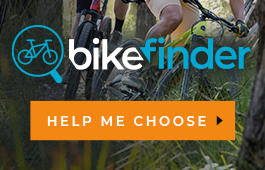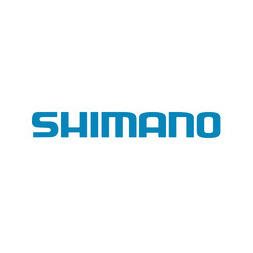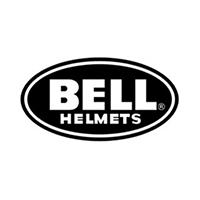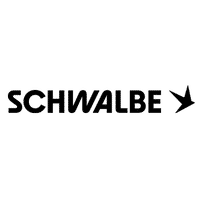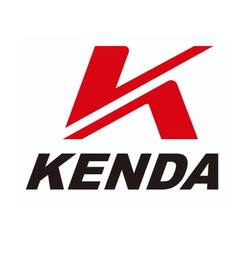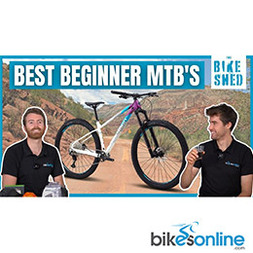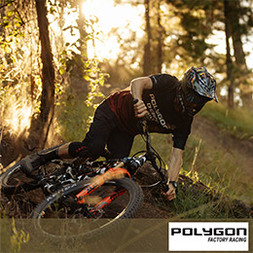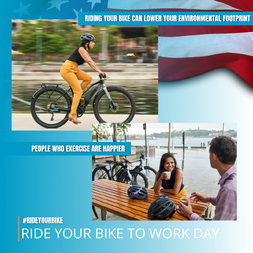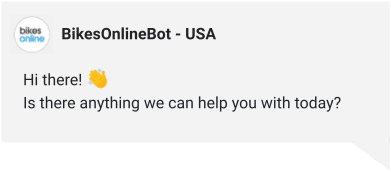Bikepacking 101
This article gives you everything you need to know before hopping on your bike for that great bike packing adventure.
.jpg)
Photo source: https://off.road.cc
What is Bikepacking?
Bikepacking is a form of bike touring where there has been a joining together of minimalist camping, bikes, and roads less travelled. Depending on how brave your feeling, or the bike you’ve picked, there may not be any roads at all, and you’ll almost be mountain biking, but with all, you need to be self-sufficient in the wild attached to your bike.
Bikepacking grew out of ultra-endurance bike races where you had to self support yourself over gruelling distances, some races making the Tour de France seem like a small jaunt around France with some friends.
Why should you go Bikepacking?
The simple answer is memories. You’ll gain a lot of them, even on a short trip. There is nothing quite like looking out of your tent, as the sun is coming up over some vista you’ve not seen before. You’ll also have the great feeling of knowing it was only through your own effort you got there using a very environmentally friendly method of transportation. The other reason is the people you meet. You’ll meet so many people, and they’ll all have their own stories that you might never feel the need to watch television again. You’ll just want to get back out there and add another chapter to the story of your life.
The Basics of What You Need
.jpg)
Photo source: https://www.blackwaterbikes.com
The most basic requirement will be a bike. It can be a fat bike, a gravel bike, a mountain bike, or a single speed bike if you feel like punishing yourself. The bike doesn’t need to have rack mounts like the touring bikes of yore. Now you should be able to find luggage that you will be able to strap to your bike.
A bike with wider tyres that are ideally set up tubeless will make bikepacking more comfortable, and you don’t want to get a puncture when you have your tent, sleeping bag, cooking utensils, and clothing strapped to your bike.
You can now also buy a lot of bike-specific bags for bikepacking. It is now no longer a niche, and most luggage companies will have an offering in their range. You’ll ideally want to start with a saddle bag and a bar bag. That should give you enough luggage for an overnight trip.
What to pack for an overnight trip
Taking an overnight trip is a good first step to making sure that bikepacking is for you. Some people will love sleeping out under the stars, and other people will hate it and never want to go bikepacking again.
- Bike and the gear you need to ride it, including lights
- Some form of shelter. Tent, tarp, bivvy, or a hammock
- A sleeping bag and a mat, don’t skimp on the mat
- Dinner
- Cooking gear
- Breakfast
- Water
- GPS/smartphone and/or a map
- Sunscreen, toothpaste, and toilet roll
- Repair kit
- First aid kit
- Headlamp, it will be smaller than a camping light
- Book to read
- Change of clothes
It might seem like a big list, but it should all be able to be packed down fairly small.
How To Plan a Successful Ride
For a ride to be successful, you need to have planned a good route. It has to be a route within your capabilities, so you need to be honest with yourself, and remember that over multi-day trips you will become more fatigued so don’t go crazy on the mileage you want to complete.
You’ll also want to make sure you plan time to stop. There will be times you want to stop for the view, to go and see a local landmark, or just because you fancy a sit down somewhere. If you make sure you have plenty of time for stops, you’ll not drive yourself crazy with trying to hit a schedule. Having a schedule that is too taxing can break you, and make you never want to go bikepacking again, so take time out of life and enjoy the ride.
To plan your route you need to know where you’re starting from and where you want to finish. Then you don’t just want to find the quickest route, and you want to find the most scenic route. Check internet forums, social media, or good old fashioned tourist books.
Doing a good bit of research is a big part of the fun about going bikepacking. You’ll find out about new places, learn a little bit of history, and gain a better understanding of the world around us. As you plan your route, it is cool to draw it out on a paper map, if for no other reason than it gives you a physical memento. It can also be folded up and stored in a small area as a backup to the GPS/smartphone combination that you’re likely to be using.
How To Plan for Food and Water

Photo Source: https://farm2.static.flickr.com
Part of the reason for planning your trip is that you can work out where to stop for food and water. Your research before the trip can come in very handy here. It can avoid you hoping to buy food and water at a time when the local shops and restaurants are shut for a holiday, and it can also stop you going when temperatures might make running out of water deadly. That advice might seem to suit trips of a more international variety, but once you’ve left your home environment, you can’t take your home comforts for granted.
Now, with taking food their a few good guidelines to stick to and help make packing easier.
- You’ll need around ½ a kg to 1 kg of food per day, depending on how exhausting your route is
- Don’t decide to try new foods on your trip, pack what you like to eat
- Don’t use the trip as part of a diet; make sure you eat well to fight off fatigue
- Pack simple meals that you can cook on a camping stove
- Make sure you plan enough time to cook your food
- Pick lightweight backpacking meals, and you should save room
- Don’t try and live on sweets, one or two is okay
Water
You’ll need water to survive, the problem is carrying a lot of water reduces your luggage space, and it’s heavy. You will though want to be carrying around 4 litres per day if you’re riding in warm conditions. You can carry less if you’re going to be riding near urban places where you’ll be able to replenish your stores easily.
The best places to carry water are your traditional bottle mounts and on fork mounts. That is why you now find a lot of gravel bikes coming with fork mounting holes. On the forks, you’ll be able to carry a lot of water. If you run suspension forks, you’ll probably want to think about a backpack with a bladder.
You’ll also want to carry water purification tablets and use your camping stove to boil water. Make sure that when you plan your route, you’ll go past running water that you’ll be able to collect and purify as you go.
Restrap Bags or Topeak Bags
If you’re familiar with bikes, then Topeak will be a name you have come across before. They make a lot of accessories for bikes; they have everything from track pumps to multitools. Restrap is a smaller English company that came out of the fixed gear scene where they made handmade toe straps; now they make some fine bikepacking luggage.
We mentioned earlier to start with a saddle bag, and the main difference between the Restap and Topeak bags is that the Restrap versions also feature a dry bag. No matter what you think the weather will be like when you head out on a trip, you’ll more than likely wish you had some of your belongings in a dry bag.
Topeak and Restrap also offer frame bags, and they both have a similar design, which will mean that you should easily be able to get water bottles from your cages. The Topeak bag comes with some big industrial looking straps to hold it in place, and both styles of bags should just take a minute for you to fit.
Leave a comment
- Training Tips for a Beginner Cyclist
- Industry Reviews
- Bikepacking 101
- Worth-it Blogs EP#2: Hardtail Hitters
- Bikes Online Does Sea Otter
- EWS #5: Burkville
- Drop bar Buyer's Guide
- The Bicycles Online's Company Fitness Challenge
- Sustainable Strategies
- Mountain Bikes Buyer's Guide
- Worth-it Blogs EP#3: Budget Hardtail Upgrades
- Commuter Bike Guide
- Pinned With Polygon | The gang goes to Crankworx
 USA
USA AUS
AUS
